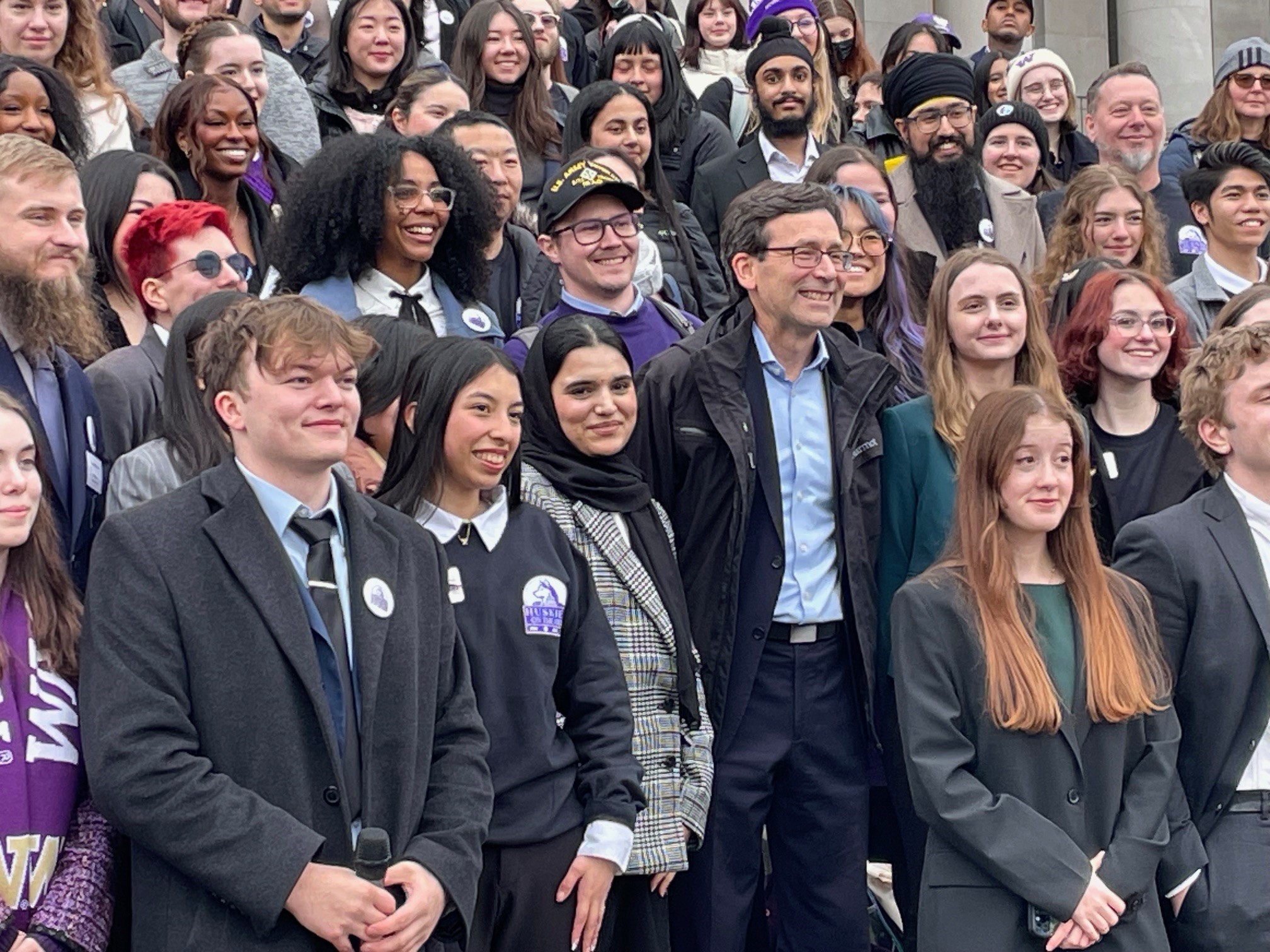Main Content
What is a microcredential?
The Institute for Innovation and Global Engagement (IIGE) offers four microcredentials: Global Leadership, Global Citizenship. Design Thinking, and NextGen Civic Leader Corps. Each integrates coursework with experiential learning to provide students a competitive edge for careers and graduate studies. A microcredential is a short, focused course or program that verifies your proficiency in a specific skill or subject area and that culminates in a digital badge. Badges can be shared with employers and professional networks to demonstrate your expertise.
IIGE microcredentials are created by faculty executive committees and approved by its campus-level Faculty Council comprising of elected representatives from each School. IIGE Microcredentials are vetted through the UW Tacoma IT governance committee constituted in 2023.
All IIGE Microcredential Pathways are open to all eligible students regardless of race, sex or other identity.
Earn a Microcredential | Add value to your degree
Frequently Asked Questions
At the successful completion of a microcredential program, learners are awarded a digital badge. Digital badges are artifacts, much like a diploma, of the skills mastered after completing a microcredential program. Open badges contain metadata about the program’s requirements and learning objectives. They are independently verifiable and portable, thus empowering learners to use and share as they see fit.
A microcredential is a short, focused program that allows learners to gain specific skills or competencies in a particular area. Upon successful completion of a microcredential, a badge is issued as the digital representation of that achievement. The badge contains metadata that verifies what was learned, how it was assessed, and who issued it.
UWT uses Canvas Credentials (formerly known as Badgr) as our credentialing system. This was selected by the University of Washington for multiple reasons:
- Canvas Credentials issues open badges. This means that the earner retains ownership of the badge, and that they are easily portable to wherever the earner wants to share them.
- Integration with Canvas: UW uses Canvas as it's Learning Management System (LMS). Canvas Credentials can be configured so that a earner, upon successful completion of a course, can earn a badge instantaneously that is tied to verifiable learning.
University of Washington Tacoma has partnered with Canvas Credentials (formerly known as Badgr) to offer digital badges for microcredential earners.
Once you've completed all of the requirements to earn your microcredential, your digital badge will be issued to you within [Timeframe]. You will receive an email from Badgr’s platform (noreply@badgr.com) with the following subject: “You earned [BADGE NAME example : Design Thinking Applied Project] badge!”. Once you have received this email, take the following steps:
- Click the “Go to the Badge” button at the end of the email.
- Create your Badgr profile if you have not done so already
- Accept your badge
- Share your badge to LinkedIn and other social media platforms
Once you've earned your badge, you can share it on your:
- LinkedIn account or other social media
- Website or online portfolio
- Resume/CV
- Email signature
Microcredentials are not documented on University of Washington Tacoma students’ academic transcripts. They serve as a digital representation of competencies gained through participation in UWT courses and/or co-curricular activities.
Yes. Besides LinkedIn, you can simply share the badge’s unique URL (for example, in a job application email you might include “Design Thinking Applied Project: [link]”). Employers or anyone with the link can view the badge’s details and verify its authenticity. You can also print out a certificate if needed – Badgr / Canvas Credentials offers a PDF certificate download for your badge which you could attach or bring to an interview, though the digital form is most powerful.
Academic microcredentials (like those from a university course) generally do not expire – once earned, the badge is yours for life. The skills it represents don’t “go away,” though their industry relevance might evolve over time.
Any current undergraduate student can enroll in the any of the microcredentials programs.
Microcredentials are much shorter and more targeted. A degree might take years, whereas a microcredential could be earned in weeks or months. Traditional certificates often require multiple courses (e.g., 4–10 courses), but a microcredential might require only 1–3 courses or a specific project.




